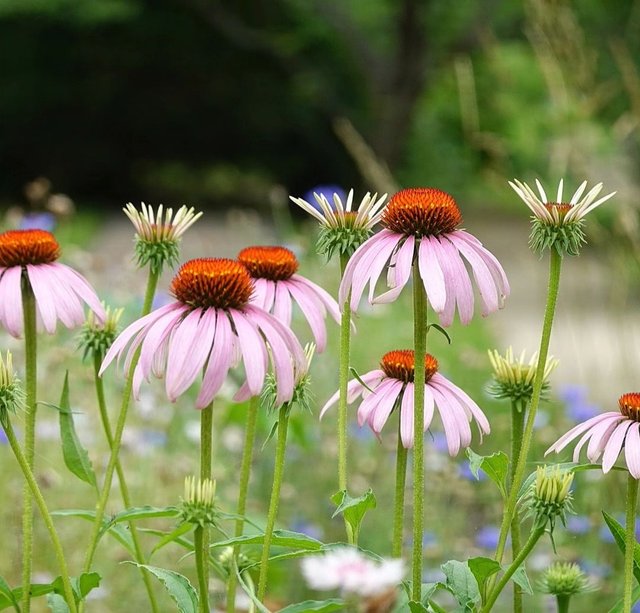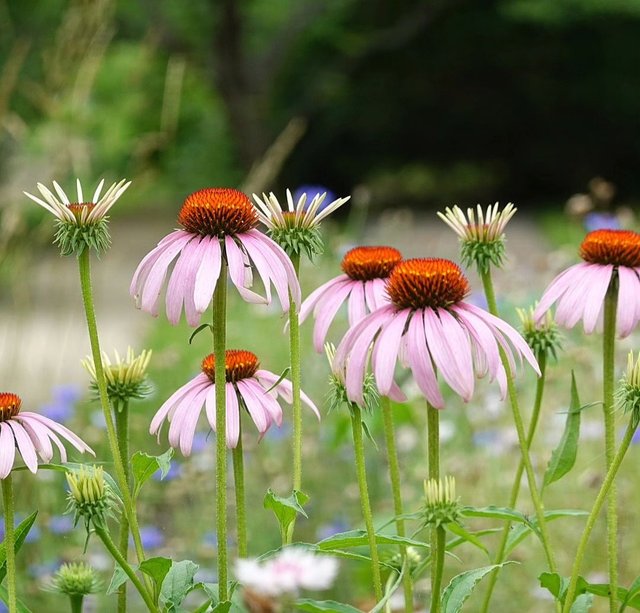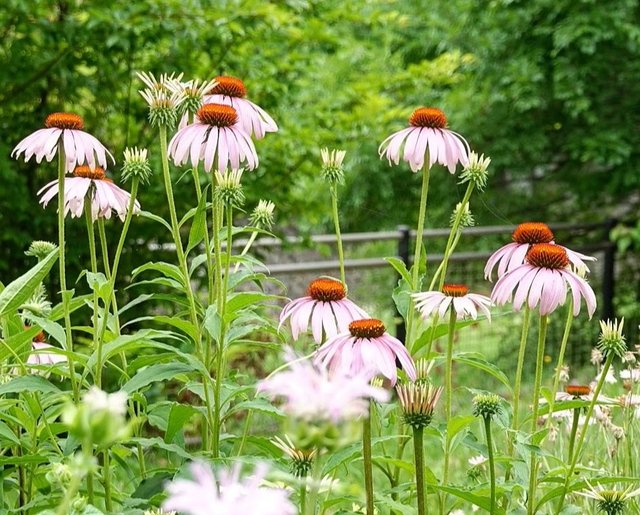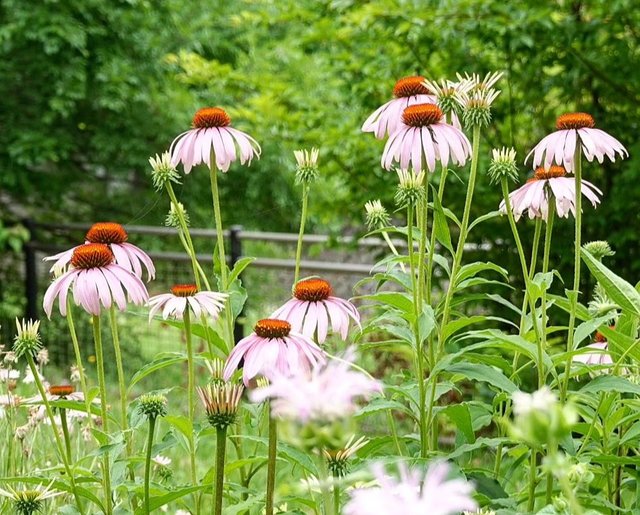Wonderful Purple Coneflower
The Purple Coneflower, scientifically known as Echinacea purpurea, is a vibrant and hardy perennial plant that is highly prized in both gardens and herbal medicine. This native North American flower is a member of the Asteraceae family and is renowned for its distinctive purple petals and prominent, cone-shaped centers. Here, we delve into the many facets of the Purple Coneflower, from its botanical characteristics to its ecological significance and medicinal uses.
Botanical Characteristics
The Purple Coneflower stands out with its large, daisy-like flowers that typically measure 3-4 inches in diameter. The petals, or ray florets, are a striking purple to pinkish hue and surround a spiky, dark brown or orange central cone composed of numerous small disk florets. The plant's sturdy, hairy stems can reach heights of 2-5 feet, making it a prominent feature in any garden.
The leaves of the Purple Coneflower are lance-shaped, coarsely toothed, and arranged alternately along the stem. They vary in size, with basal leaves being larger and more broadly ovate compared to the smaller, narrower leaves found higher up the stem. This robust foliage provides a lush backdrop to the plant's stunning blooms.
Ecological Significance
Purple Coneflowers play a crucial role in their native ecosystems. They attract a variety of pollinators, including bees, butterflies, and hummingbirds, making them a valuable addition to pollinator gardens. The flowers' abundant nectar and pollen provide essential food sources for these insects, particularly in midsummer when other floral resources may be scarce.
Moreover, the central cone of the flower, which persists long after the petals have fallen, produces seeds that are a favorite of birds such as goldfinches. By including Purple Coneflowers in a garden, one can support local wildlife throughout the growing season and into the winter months.
Cultivation and Care
Purple Coneflowers are renowned for their ease of cultivation and adaptability. They thrive in well-drained soil and full sun but can tolerate partial shade. Once established, they are drought-tolerant, making them suitable for xeriscaping and low-maintenance gardens.




